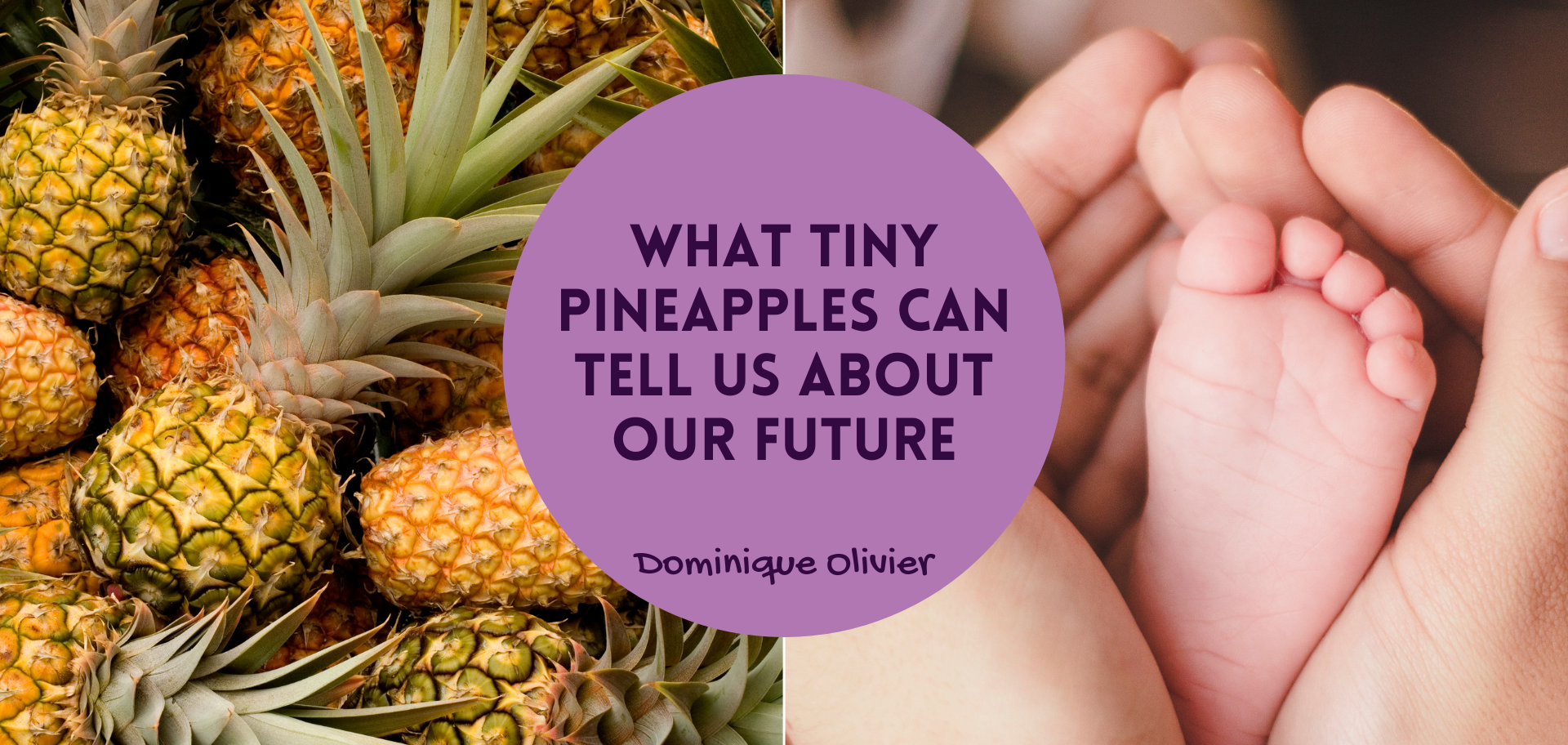Fresh Del Monte, a global producer of fruits and vegetables, launched a new product in March of this year. Weighing in at an average of 600g, the Precious Honeyglow pineapple is the smallest pineapple they’ve ever created. And it’s telling you everything you need to know about humanity’s trajectory.
A 600g pineapple doesn’t sound like a big deal at all, until you take into consideration that a standard pineapple averages in weight around 1kg. That means that Precious Honeyglow is about half the size and weight of its full-size sibling. Coming in at $20.99 versus the $11.79 you’ll pay for a regular-sized pineapple from the same producer, “precious” certainly seems to be an apt description.
Why is there even a market for half-sized pineapples? Now that’s where the story gets interesting.
The empty seats at the table
Solo living is becoming increasingly common in the US, with over 28% of American households now inhabited by just one person. For context, that’s the second largest portion of the US population (there are various categories of people living together). With fewer young people getting married or having children, the trend towards solo households is playing a role in the mounting issue of food waste, particularly through spoilage. When there are less people in the house to help eat the leftovers, a lot more food goes to the bin.
According to the USDA’s Economic Research Service, this translates to a staggering 133 billion pounds of food wasted annually, valued at around $161 billion. Fresh Del Monte’s own internal surveys reveal that individuals living alone are notably less inclined than those in multi-person households to opt for full-size whole pineapples, mainly to minimise fruit wastage. Their elegant solution to this challenge is to create smaller pineapples that produce less leftovers and therefore less food waste.
The singleton household phenomenon is not native to the US either. According to the United Nations, the proportion of single-person households worldwide increased from 23% in 1985 to 28% in 2018. By 2050, this number is projected to reach 35%.
That’s a lot of individuals – a few billion people – eating alone, sleeping alone, travelling alone and watching TV alone in 2050.
For many businesses, this presents a fantastic opportunity for increased sales. Consider that for each married household sharing a Netflix account, Netflix could have the chance to sell two subscriptions to two separate solo households. Other businesses are already jumping at the opportunity to cater to this growing market. In 2019, P&G introduced the Forever Roll, a giant toilet paper roll that could (theoretically) see a single-consumer household through an entire month, thereby reducing the household storage space usually required to store extra rolls. Food brands like Kellogg’s, Bisto and Tabasco have already introduced single-serving products to target households with individuals living alone, while appliance manufacturers like Bosch are releasing miniaturised versions of appliances like dishwashers and washing machines, ideal for single households with limited floorspace.
It’s sounding like a future that’s ripe with potential for brands who understand their target markets. But what about humanity as a whole?
Lonely planet
I’m sure we don’t have to go into too much detail around the specifics here (after all, most of us attended biology class in high school), but it’s obvious that a rise in single households today leads to a drop in the birth rate tomorrow.
If you’ve spent any time at all on social media, you’ll know that opinions vary wildly on whether having fewer babies is a good or a bad thing. For every Elon Musk advocating for his 11 children, there are numbers of environmentally or economically concerned men and women getting voluntarily sterilised before marriage. I won’t weigh in on where I stand on this personally, but I will share with you some of the potential outcomes of a slowly shrinking population.
Japan is a very good case study for this. In 2023, the birth rate in Japan was the lowest it had been since the 19th century and seniors in Japan are living longer than ever before. Japan has one of the world’s oldest populations, with almost 30% of Japanese citizens aged 65 or older. Last year, the proportion of those aged above 80 surpassed 10% of the population for the first time in history.
Here’s a statistic that shows you exactly how skewed the Japanese population age is: for the last decade, sales of adult diapers in Japan have exceeded sales of diapers for babies. In a statement, Oji Holdings said its subsidiary, Oji Nepia, currently manufactures 400 million infant nappies annually. Production has been falling since 2001, when the company hit its peak of 700 million infant nappies.
Japan is grappling with a critical issue: a diminishing population due to both ageing and declining birth rates, posing a significant challenge for one of the world’s largest economies. The Japanese government has launched various efforts to tackle these issues, but they have seen little success thus far. The older the population, the more pressure is put on younger taxpayers to make up for the gap left by the ever-growing community of retirees. As the workforce rapidly diminishes, the demand for social and medical services continues to rise.
Despite increased investment in child-related programs and subsidies aimed at supporting young couples or parents, birth rates have not seen a significant boost. Experts attribute this to various factors, including declining marriage rates, greater female participation in the workforce and the rising costs associated with raising children.
Prime Minister Fumio Kishida warned last year that Japan stands at a pivotal juncture which will impact its ability to sustain its societal functions. He emphasised the urgency of the situation, labelling it as a “now or never” scenario.
Of course, declining marriage rates, greater female participation in the workforce and the rising cost of raising children are not unique to Japan at all – in fact, these are trends that impact practically every country in the world. For whatever reason, Japan just appears to be two decades ahead of the curve, a cautionary tale playing out in real time right in front of our eyes.
Will AI solve it?
As I see it (remember, this is still an opinion column at the end of the day), there are a variety of ways that the involvement of AI could affect the declining birth rate and the global economy.
Here’s one way: as the birth rate comes down and the working population begins to decrease on a global scale, AI-enhanced software and machines rapidly scale up productivity. This fills in the gaps in the workflow and allows a smaller group of workers to maintain the same outputs as the more populous generations that came before, thereby supporting older and younger generations despite having fewer hands on deck.
Here’s another, much darker scenario: as AI technology advances, more jobs disappear from the market. Although the workforce is also getting smaller, it is being outpaced by AI, which means that workers have to compete in an ultra-competitive job market while shouldering the burden of a growing senior demographic that no longer pays taxes.
These hypotheses represent opposite extremes, which means it is likely that the actual outcome will be somewhere in the middle. One thing is for sure though: pineapples are getting smaller.
And more expensive.
About the author:

Dominique Olivier is the founder of human.writer, where she uses her love of storytelling and ideation to help brands solve problems.
She is a weekly columnist in Ghost Mail and collaborates with The Finance Ghost on Ghost Mail Weekender, a Sunday publication designed to help you be more interesting.
Dominique can be reached on LinkedIn here.




